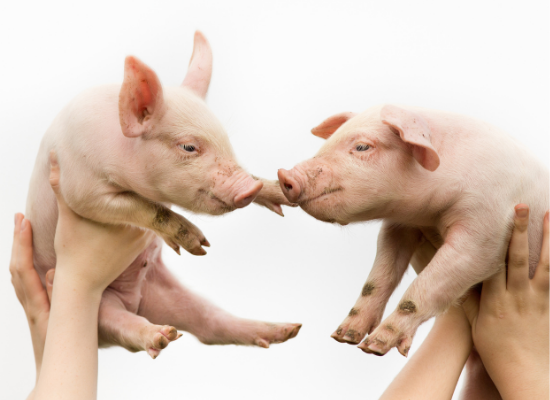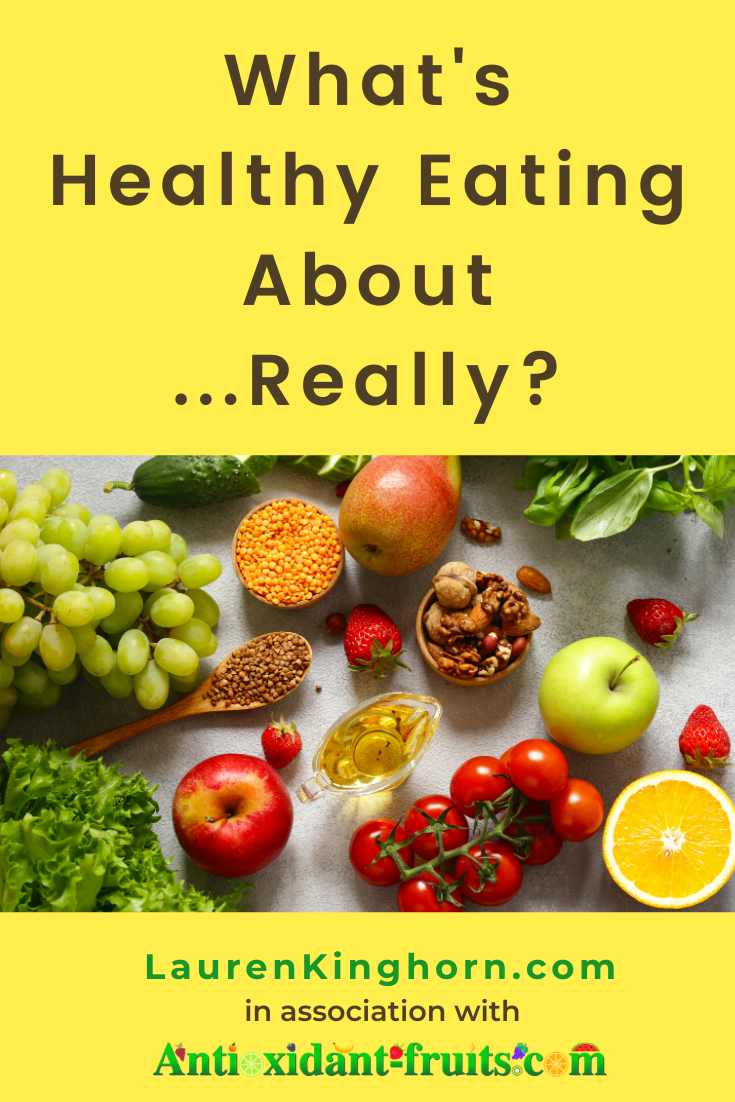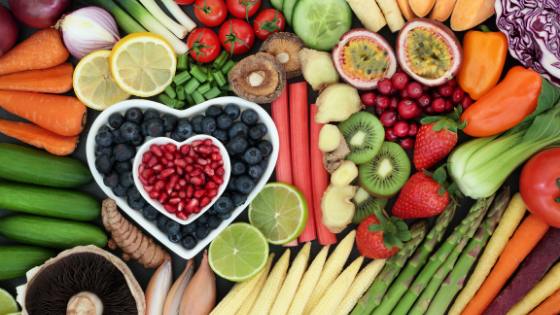What’s Healthy Eating About?
The first time I started questioning whether I really knew what healthy eating was about, was almost 30 years ago. I moved to a small town in the Klein Karoo called Montagu and met the renowned fruitarian, Essie Honiball.
At the time, Essie was 67-years-old and the picture of health, a joyful, sociable lady with boundless energy. She would come down to the hot springs, where I worked, to swim with her friends.
Essie told me she felt and looked younger than she did in her 30’s when she was dying of TB (Tuberculosis). She firmly believed that switching to a diet almost exclusively of fruit, nuts, and seeds was what saved her.
Essie Honiball lived to the age of 89. Here’s an interview with Essie at age 86.
What Do We Need to Eat?
In Biology and Home Economics class at school, I had been taught we all needed to consume a varied diet of meat, fish, starch (grains), dairy, vegetables, and fruit.
The lesson was clear. If you’re not eating a balanced diet consisting of all the recommended food groups, you won’t get all the nutrients you require for good health.
- Proteins
- Carbohydrates
- Fats
- Fibre
- Vitamins
- Minerals
- Antioxidants
- Water
Yet I discovered that for some people, it was possible to live on fruit alone. This idea blew my 20-year-old mind. I didn’t become a fruitarian myself, though I’m sure it must have encouraged me to eat more fruit.
I went through my own health challenges in my late 20’s and started tuning into what my body needed. I started juicing and doing fruit and veg cleanses. I discovered that my body functioned best on fresh fruit and veggies.
It was while I was cleansing and juicing that I felt my healthiest, my energy levels were always through the roof, I was slim, happy, sleeping well, and free from pain.
Yet, for years, I kept following the healthy eating guidelines we were taught at school. Eat all 5 food groups, have everything in moderation, drink 8 glasses of water, sleep 8 hours a night. I knew the drill.
That’s what I was taught at school and so I believed it was the truth. But is it?
Related: Aligning All 8 Dimensions of Health and Wellness
What are We Designed to Eat?
On 9th September 2020, I made the switch to a wholefood plant-based diet. My friend Mariana called me from Joburg for a catchup chat and encouraged me to look into it.
Mariana had been suffering from debilitating bouts of rheumatoid arthritis and found that she was able to virtually reverse her condition if she ate a plant-based diet. When she slipped back to eating normally, her symptoms would flare up again.
Mariana sent me some YouTube links to videos by Doctors who advocate a plant-based diet and I found the information so compelling, I decided to join Mariana in following a plant-based lifestyle.
One of the segments I found really interesting, was this. Humans are not designed to eat meat. We think we are because again, we were always taught at school that humans are omnivores, but it turns out we are not. When you look into our physiology, it appears that we are actually natural herbivores, plant-eaters.
If you look at our jaw structure, we are not built to be carnivorous. We can’t kill an animal and tear it apart with our teeth.
 And instinctually, we don’t want to.
And instinctually, we don’t want to.
If you saw a little rabbit or piglet with a broken leg on your path, what would you do? For most people, our natural instinct would be to comfort and do what we can to save the wounded animal.
What would a dog or cat do in the same situation? Pounce! And gobble it up. Because they are natural carnivores, meat-eaters and happy to prey on defenceless creatures.
The thing is, that by the time we see fresh meat in freezers at the grocery store, it’s been neatly chopped up, cleaned and packaged and we don’t think of it as a creature at all. We didn’t have to kill it ourselves so we don’t spare a thought for the life of the animal we are about to eat.
What is a Wholefood Plant-Based Diet?
It’s kind of like a vegan diet because it’s mostly vegetables, fruit, and grains but the emphasis seems to be more on eating plants and whole grains for optimum health.
You can call yourself a vegan and eat fried chips and loads of processed vegan delicacies. That’s not the idea with a wholefood plant-based diet.
On the other hand, you can call yourself wholefood plant-based and sometimes eat eggs, dairy, fish, poultry or meat, from the best possible sources, such as organic, grass-fed, pasture-raised or wild-caught.
 Why Eat a Plant-Based Diet?
Why Eat a Plant-Based Diet?
I’ve found that people choose to live a vegan or plant-based lifestyle for three compelling reasons:
- To protect animals from harm
- To protect the environment
- To protect themselves from preventable diseases
What to Eat on a Plant-Based Diet?
So, what do people consume on a plant-based diet?
- Vegetables – in season, fresh and organic where possible
- Starchy vegetables – such as potatoes, sweet potatoes, butternut
- Fruits – including berries and melons
- Nuts – ideally raw, unsalted macadamia, walnuts, brazil nuts and cashew nuts, almonds and nut butters
- Seeds – such as pumpkin, flax, chia, sesame, sunflower and hemp seeds
- Whole grains – such as rolled oats, brown rice, quinoa etc.
- Legumes – chickpeas, lentils, peas, peanuts, black beans, etc.
- Unsweetened plant-based milk – soya milk, almond milk, coconut milk etc.
- Healthy Fats – avocado, coconut oil, olive oil
- Plant-based protein mushrooms, tofu etc.
- Herbs and Spices – including seasonings like nutritional yeast
- Coffee, Tea, Herbal Tea
How to Eat More Fresh Fruit and Veggies?
We’ve got so used to reaching for yummy goodies loaded with unhealthy sugars that we forget to eat our fresh fruit and veg.
Here a few quick tips to help you get in more fruit and veggies on a daily basis.
- Buy a variety of fresh, fruit and veggies, including berries, melons, nuts and seeds
- Begin each meal with raw, fresh fruit or veg or salad
- Aim to eat at least 5 different colours at each meal
- Begin or end your meals with veg and lentil or bean soup
- Make fresh smoothies or juices as snacks
Related: What is Health and Wellness About?
What Not to Eat on a Plant-Based Diet?
- Fast food and fried foods – pizza, hamburgers, hotdogs, fries
- Refined Foods – white bread, pasta, doughnuts, cakes, cookies, biscuits
- Packaged and convenience foods – crisps, biscuits, health bars, frozen dinners
- Processed animal products: bacon, ham, macon, etc.
- Processed vegan products – such as vegan meat, butter or cheese
- Artificial sweeteners – and food or sauces containing artificial sweeteners
What to Avoid on a Plant-Based Diet?
Many plant-based advocates follow a vegan diet but if some feel they need to supplement their diets with animal sources, for whatever reason. If you’re going to introduce some form of animal product into your diet, follow the guidelines below.
- Meat – eat very rarely, and if you do, make sure the animals are grass-fed, pastured and treated humanely, where possible
- Dairy – as above
- Poultry – free-range, grain-fed and organic, where possible
- Eggs – as above
- Seafood – wild-caught from sustainable fisheries, where possible
What’s Healthy Eating About?
So, what’s healthy eating about… really?
For me, it’s a wholefood plant-based diet, because of what I’ve read and researched about the many health benefits. And also because of how I feel when I’m eating loads of fresh fruit and veggies.
Essentially, you get to decide what healthy eating is about for you. We are all different and our bodies respond differently to what we eat.
What I can tell you, is that your taste changes very quickly when you make the switch to a plant-based diet. Foods you thought you could never live without (like cheese, cream or meat) no longer hold their appeal.
I invite you to try it out for a week or two and see how you feel.
This post was sponsored by Anti-OxidantFruits.com. All opinions are my own.

